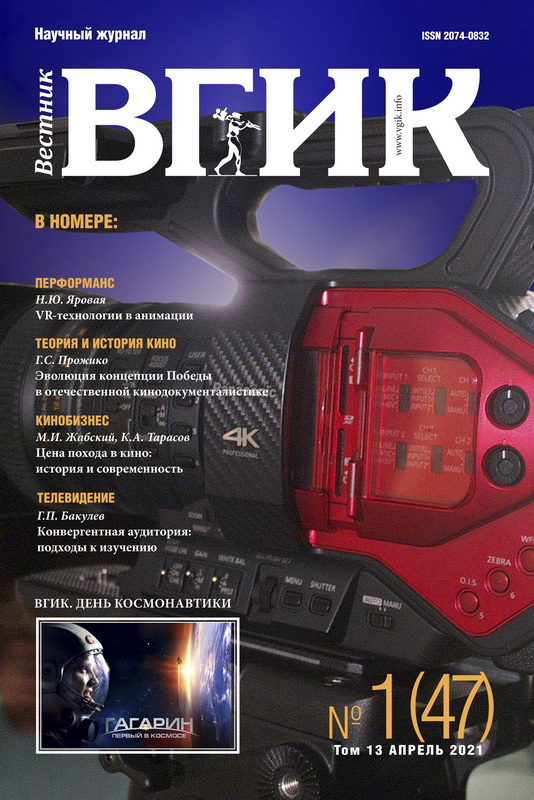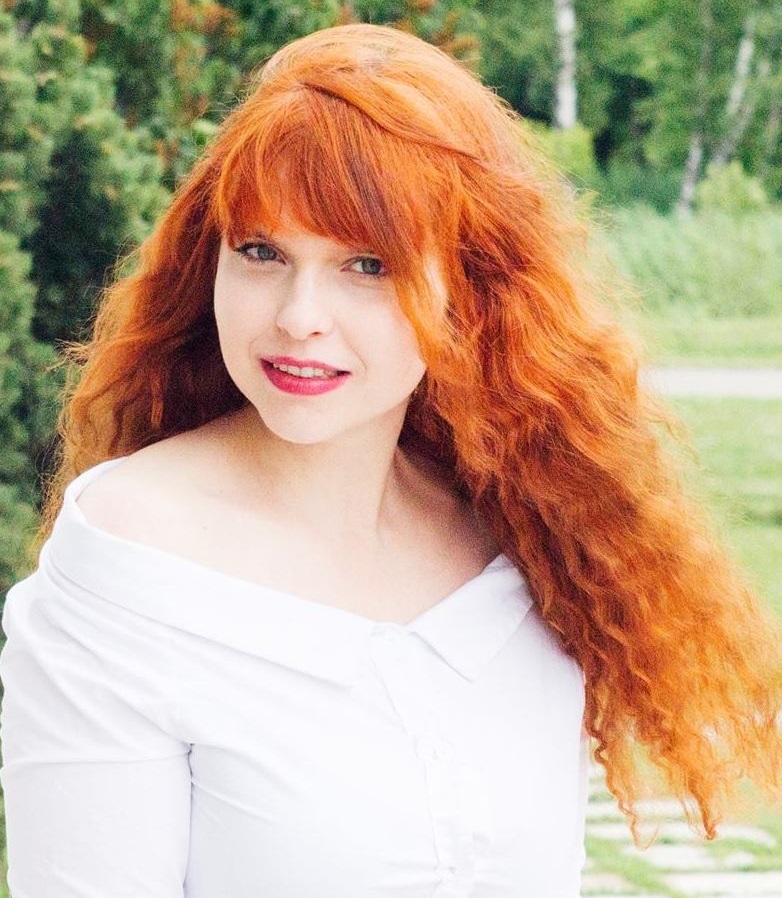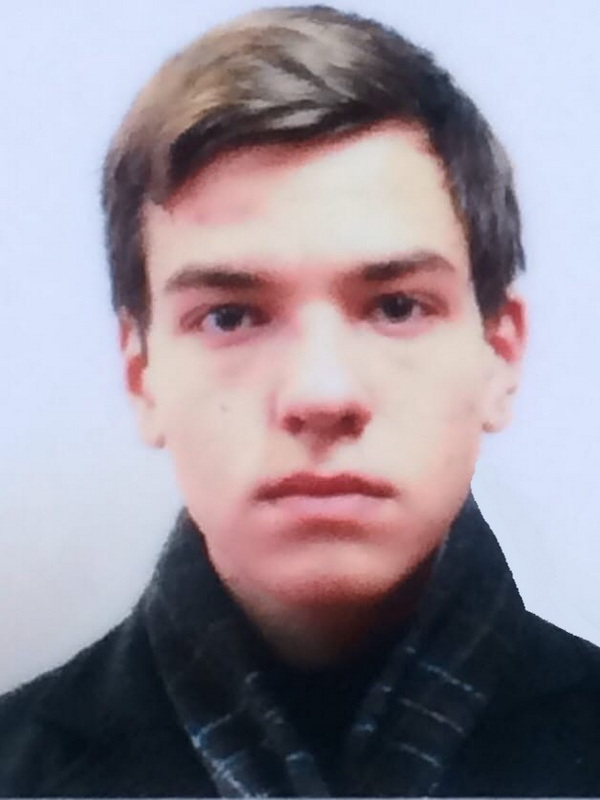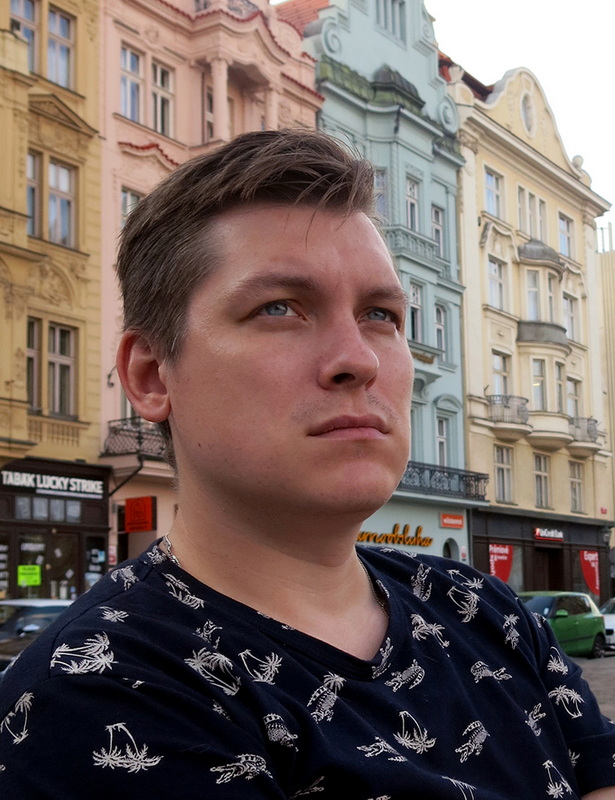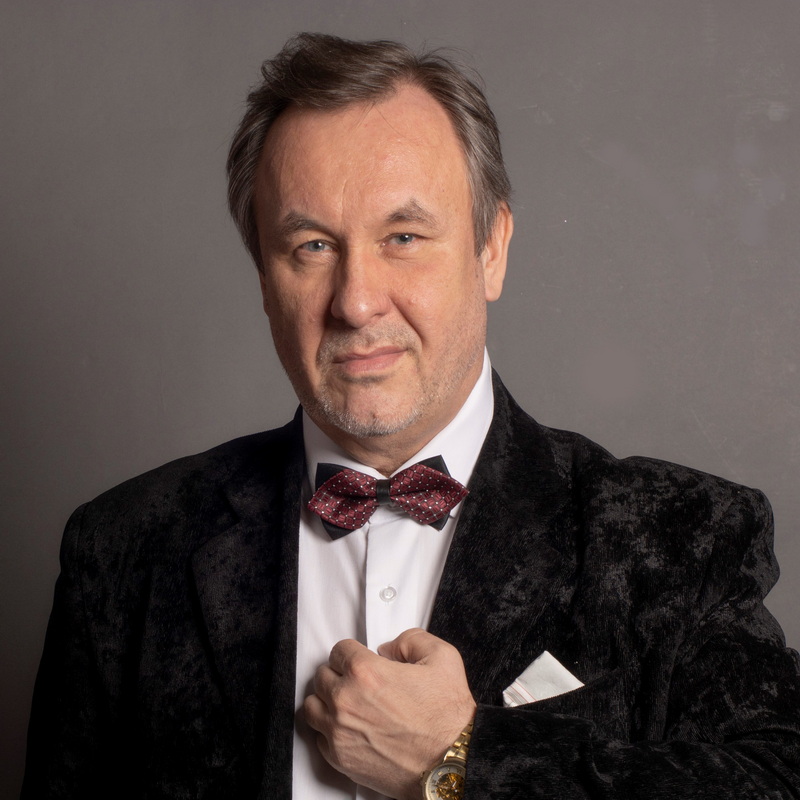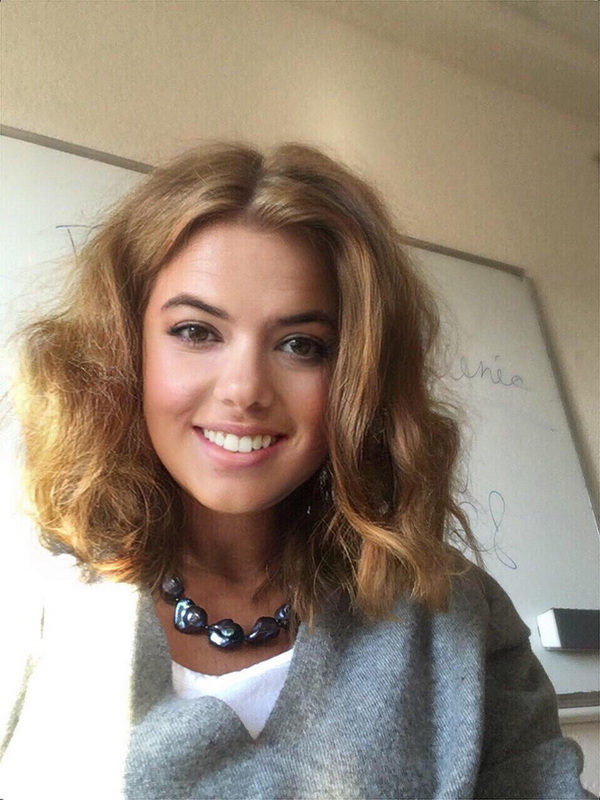Том 13, № 1 (2021)
- Год: 2021
- Статей: 13
- URL: https://journals.eco-vector.com/2074-0832/issue/view/1951
- DOI: https://doi.org/10.17816/VGIK131
Весь выпуск
ХРОНИКА В ДЕТАЛЯХ | АКТУАЛЬНОЕ СОБЫТИЕ
 6
6


ТЕОРИЯ И ИСТОРИЯ КИНО | ЭКРАННЫЕ ИСКУССТВА
Эволюция концепции Победы в отечественной кинодокументалистике
Аннотация
Каждое поколение послевоенных десятилетий стремилось заново открывать суть «великого противостояния» нашего народа фашистским захватчикам. Отечественные документалисты выражали эту новую концепцию нашей Победы каждого поколения в лентах, созданных на материалах киноархивов и свидетельствах участников войны. Статья предлагает обзор опыта освоения этой темы нашей документалистикой от первых послевоенных лет до нынешних времен.
 8-22
8-22


КИНОЯЗЫК И ВРЕМЯ | ГЕНЕЗИС ОБРАЗА
Драматургические особенности неигрового кино: телефильм, кинофильм, фильм для интернет-платформы
Аннотация
В статье исследуются особенности драматургии и режиссуры неигрового фильма, созданного для разных целей показа — возможности использования закадрового текста, специфика работы с фактом и образом, а также режиссерский и драматургический инструментарий. Прогнозируются модификации методов в документалистике, предназначенной для показа на интернет-платформах.
 24-36
24-36


Формат Screenlife vs. классическое кино
Аннотация
Пандемия COVID-19 оказала воздействие на многие сферы современной жизни, в том числе и на экранные медиа. Актуализировались новые формы и способы коммуникации со зрителем. В кино стал востребованным формат Screenlife, отличающийся от традиционного киноформата. В статье рассматривается история развития десктоп-фильмов, обосновывается преимущество использования программного обеспечения, анализируются технологии Screencast, ведущие к формированию целостного формата киноповествования.
 37-44
37-44


ПЕРФОРМАНС | ИСКУССТВО ВОПЛОЩЕНИЯ
VR-технологии в анимации
Аннотация
В статье анализируются VR-опыты создания анимационных произведений с погружением в виртуальную среду. Рассматриваются художественные приемы, композиционные и стилистические решения, используемые при создании анимации в VR-среде с целью эстетического воздействия на зрителя. Получение зрителем глубокого чувственного опыта становится возможным в результате открытия аниматорами новых граней воздействия виртуального повествования и наработки навыков создания виртуальных миров с помощью совершенствующихся компьютерных технологий.
 46-57
46-57


Фольклорные традиции Свердловской школы анимации
Аннотация
Статья посвящена фольклорным традициям, заложенным в фильмах режиссеров-аниматоров, работавших на студиях Свердловска в 1960–1980 годы и оказавших существенное влияние на творчество последующих поколений уральских кинематографистов. Рассматриваются технологические, жанровые и художественные открытия основоположников свердловской школы анимации в ходе воплощения на экране фольклорного материала.
 58-67
58-67


КУЛЬТУРА ЭКРАНА | КУЛЬТУРОЛОГИЯ. ФИЛОСОФИЯ
Медиаобраз экрана как репрезентация социокультурной реальности
Аннотация
Статья затрагивает вопросы общих и различаемых признаков в сюжетопостроении кинодокументалистики и телевизионного научно-популярного сериала. Предлагается авторское видение социокультурных обоснований в этих формах аудиовизуального произведения, затрагиваются в них коррелирующие моменты. Раскрываются также элементы эвидентности как явления предпосылок к формированию через экран медийных смысловых образов в сознании медиапотребителя.
 70-81
70-81


МИРОВОЙ КИНОПРОЦЕСС | АНАЛИЗ
Концепция «Кинематограф дьявола»: от теории Ж.Эпштейна к фильмам Р.Эггерса
Аннотация
В статье анализируется противостояние человека и природного ландшафта в фильмах Р.Эггерса «Ведьма» (2015) и «Маяк» (2019) в связи со специфической функцией репрезентации пустых пространств в поэтике звукового кино. Теоретической базой для построения системы доказательств является концепция «Кинематограф дьявола», сформулированная французским режиссером и кинотеоретиком Ж.Эпштейном, в основе которой лежит ряд тезисов, актуализированных современным кинорежиссером Эггерсом.
 84-98
84-98


КИНОБИЗНЕС | СТРАТЕГИЯ И ТАКТИКА УПРАВЛЕНИЯ
Цена похода в кино: история и современность
Аннотация
За 18 лет снижения посещаемости кино в СССР (1968–1986 годы) средняя цена кинобилета повысилась менее, чем на 3 коп. (27,09 коп. против 24,46 коп.). Крупные общественные сдвиги и курс кино на рынок с конца 1980-х годов дали толчок стремительному росту ценовой политики. Цена билета, некогда способствовавшая массовости кино, стала фактором демассовизации кинозрелища в его традиционной ипостаси.
 100-118
100-118


ТЕЛЕВИДЕНИЕ | ЦИФРОВАЯ СРЕДА
Конвергентная аудитория: подходы к изучению
Аннотация
В статье рассматривается проблема исследования аудитории современной медиасистемы, формируемой процессами конвергенции/деконвергенции. Широкое распространение в домах цифровых технологий вносит существенные коррективы в изучение медиапользования. Отсутствие при измерении аудитории взаимосвязи между качественными и количественными показателями не позволяет выявить точную картину медиаконтактов и моделей потребления в новой медиасреде. Рассматривается ряд теоретических концепций анализа конвергентной аудитории, в том числе подход «медиарепертуаров»/«медиаансамблей», которые обеспечивают анализ не одного конкретного медиума, а целого медиакомплекса и популяризируемого им контента во взаимосвязи. Новый подход к исследованию бросает вызов не только традиционным бизнес-моделям и медиасистемам, но и существующим представлениям об «аудитории».
 120-127
120-127


ПРАВОВЫЕ АСПЕКТЫ | НАУЧНОЕ ЦИТИРОВАНИЕ
Свободное цитирование: пределы и возможности
Аннотация
В статье рассматриваются случаи правомерного цитирования охраняемых (опубликованных) произведений. На основании исследованных норм действующего законодательства и судебной практики выявляются критерии свободного использования объектов авторского права в научных и образовательных целях. Обосновывается отличие цитирования от иллюстрирования.
 130-139
130-139


SUMMARY | ПРЕЗЕНТАЦИЯ АВТОРОВ
 152-157
152-157


РЕКОМЕНДАЦИИ АВТОРАМ
Рекомендации авторам
 158-160
158-160











